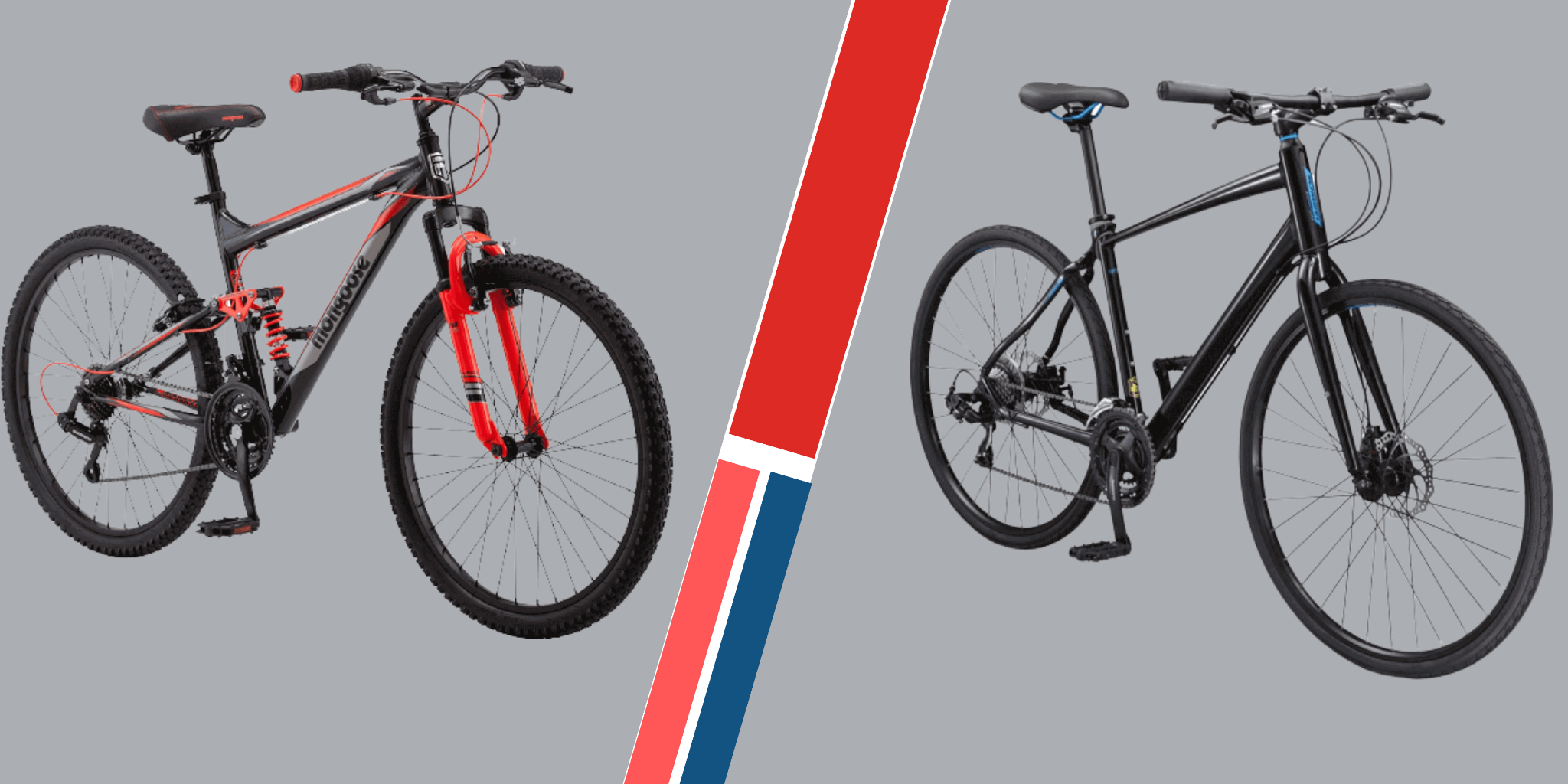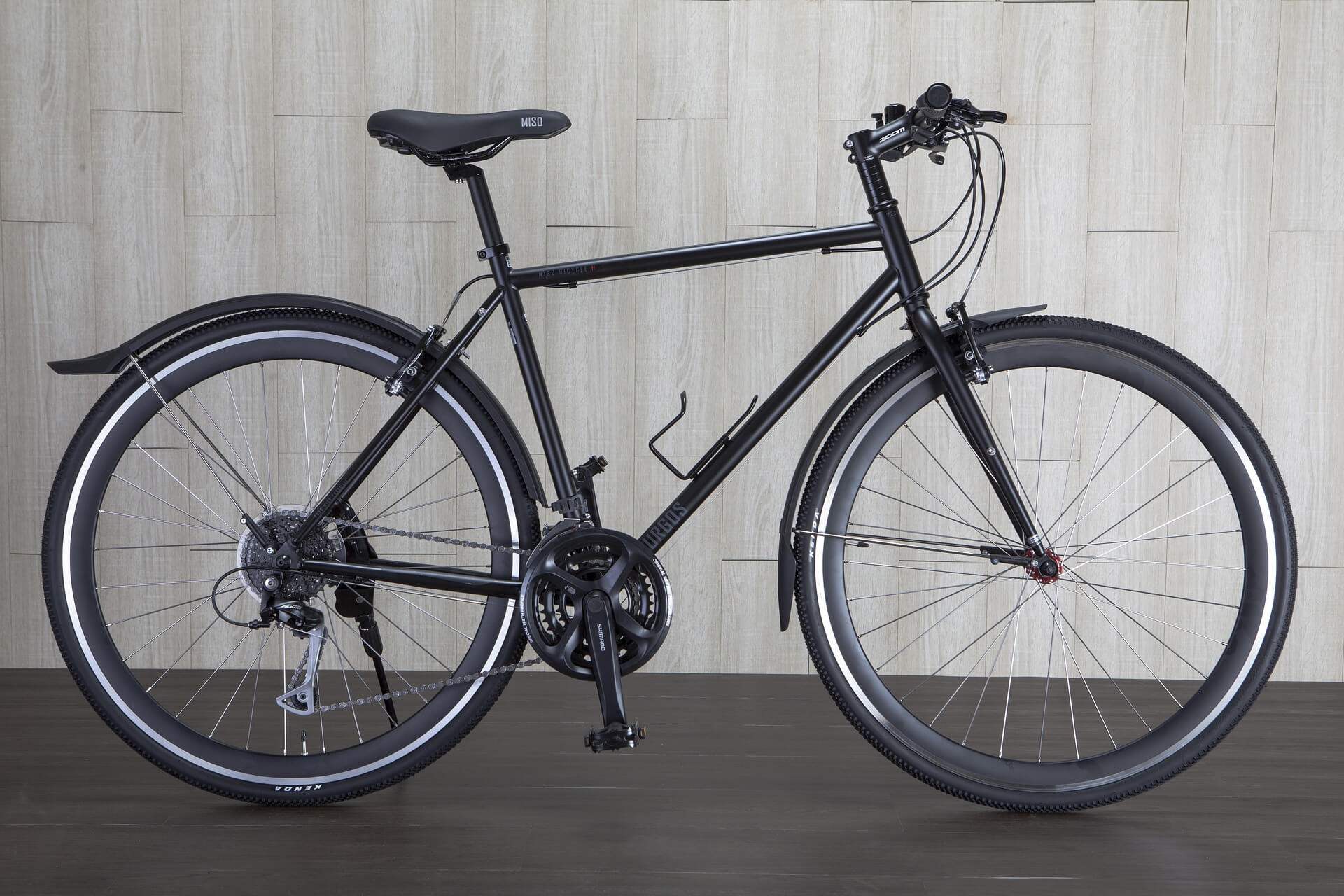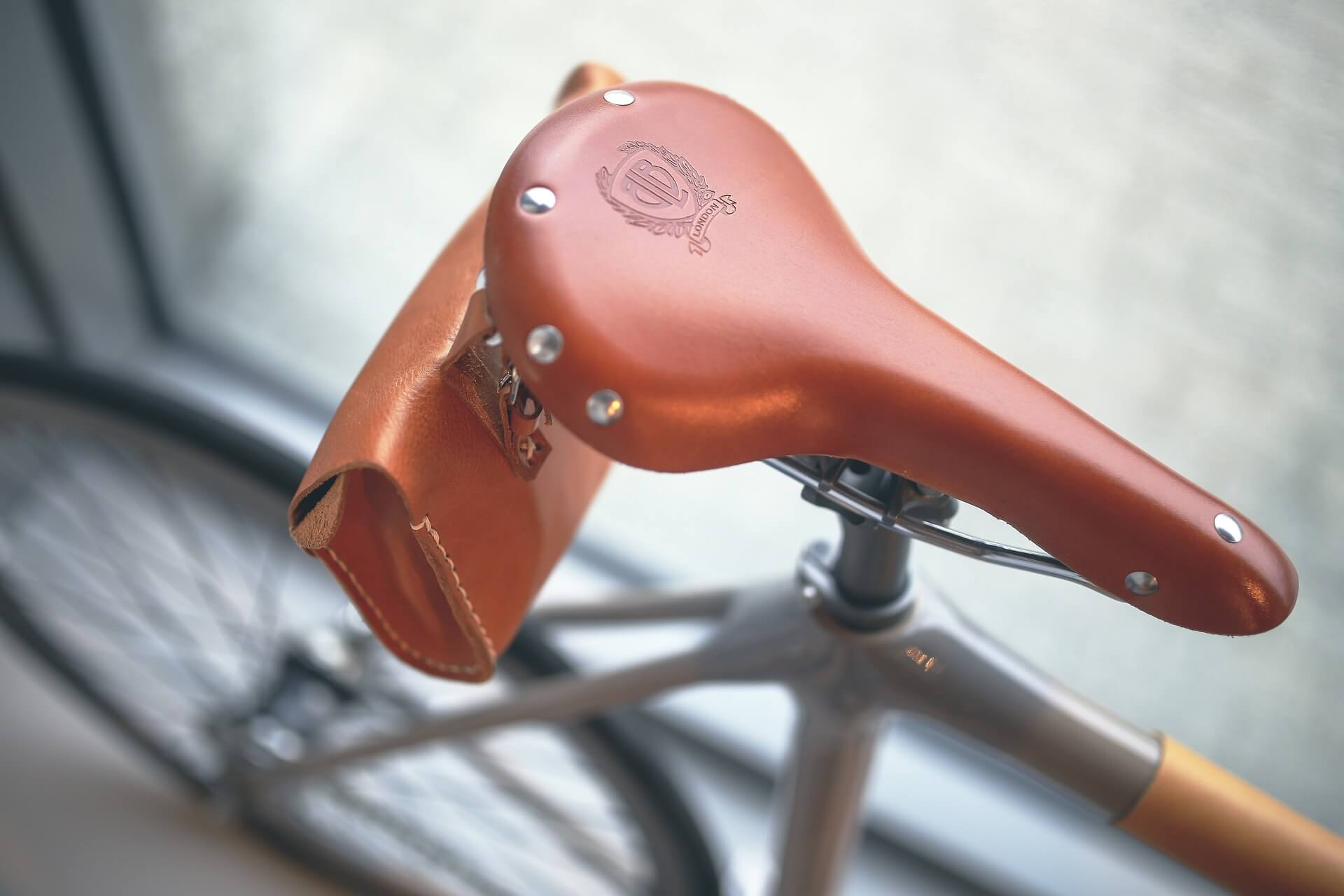Mountain Bikes vs Hybrid Bikes: The Ultimate Showdown

When it comes to biking, there are a plethora of options making it difficult to choose the right bike for your needs. Two popular types of bikes that stand out are mountain bikes (MTB) and hybrid bikes. Mountain bikes offer superior off-road capabilities while hybrid bikes provide a better experience on roads and sidewalks. Both types of bicycles have their own advantages and limitations, so it can be tough to decide which one is the best fit for you. Let’s explore the difference between a hybrid and a mountain bike so you can make up your mind to buy one for your next adventure.
Table of Contents:
-What is a mountain bike
-What is a hybrid bike
-Mountain bike: Pros and Cons
-Hybrid bike: Pros and Cons
-Exploring the difference between body parts
-Frame
-Suspension
-Brakes
-Gearing
-Tires
-Fenders & Cargo racks
-Handlebars
-Seats
-Who should get a Hybrid Bike
-Are hybrids faster than Mountain bikes
-Can I turn my mountain bike into a hybrid
-Specific differences between a Mountain bike vs Hybrid bike vs Road bike
-Conclusion
What is a mountain bike?
Mountain biking is an increasingly popular form of outdoor recreation, but what exactly is a mountain bike? This bike is a bicycle designed specifically for off-road riding – often on rough terrains such as dirt trails, mud paths, and rocky surfaces. These bikes are typically heavier and sturdier than traditional road bikes, making them more suitable for unpredictable terrain.

These bikes come in a variety of sizes and styles to suit different types of riders. For example, cross-country mountain bicycles are lightweight and agile, perfect for long rides over varied terrain. On the other hand, downhill bikes are heavy-duty with the full suspension to handle steep descents at high speeds. There are also fat tire bikes with disc brakes that feature large tires for maximum traction in sand or snow.
What is a hybrid bike?
Hybrid bikes have become increasingly popular among commuters, recreational cyclists, and even professional athletes due to their versatility. A hybrid bike is a cross between a mountain bike and a road bike, providing the best of both worlds. It combines characteristics from each style to create an all-purpose bicycle that can handle many different types of terrain.

The frame of a hybrid bike is typically made from lightweight aluminum or steel, which helps provide stability without compromising on speed. The wheels are usually larger than those found on road bikes and narrower than those seen on mountain bikes for an optimal balance between rolling resistance and traction in varied conditions. Suspension forks are often included for further comfort on bumpy roads or trails. This all comes together to make for an efficient ride no matter where you go!
Mountain bike: Pros and Cons
Pros:
1. Offer versatility as it Can handle a variety of terrains, including rocky trails, muddy paths, and steep inclines.
2. Offer comfortable rides due to the suspension system and great seats.
3. They are made with durable materials that can withstand wear and tear.
4. Riding them engages your entire body and can help to improve your cardiovascular health.
5. Mountain biking can be an exciting and thrilling experience, as you navigate through challenging trails and obstacles.
Cons:
1. They are typically heavier than other types of bikes, which can make them more difficult to maneuver and transport.
2. They can be quite expensive, especially if you want a high-end model with advanced features.
3. Need regular maintenance, including cleaning and lubricating the chain, adjusting the suspension, and replacing worn components.
4. These bikes are not designed for speed and may not be as efficient on paved roads as other types of bikes.
Mountain biking requires a certain level of skill and experience, so the learning curve is involved.
Hybrid Bike: Pros and Cons
Pros:
1. Increased speed due to a combination of a mountain bike and tarmac bike components.
2. Greater range of gears and increased ability to tackle hills.
3. More comfortable than road cycles due to its more upright riding position.
4. Offers better visibility of traffic due to its higher handlebars.
5. More durable than a road bike, making it more suitable for urban use.
Cons:
1. Heavier than a regular mountain bike, resulting in less efficient pedaling on flat surfaces.
2. Higher cost when compared to an equivalent mountain or road bike setup.
3. Not as fast as a dedicated road bike, but not as maneuverable as a mountain bike either.
4. Limited selection of tires compared to other styles of bikes, affecting traction in some situations.
5 Lack of specialized components designed specifically for hybrid bikes
Exploring the difference between body parts:
Frame
Hybrid and Mountain bike frames are two very distinct types of bicycle frames. Both offer riders a variety of benefits, however, depending on their needs and desires, one may be more suitable than the other. Mountain bikes are designed for off-road riding on rough terrain and challenging trails. Their frames are typically heavier and constructed from more durable materials such as aluminum or titanium to withstand the strain of unpredictable conditions.

On the hand, Hybrid bikes are designed for a comfortable ride around town or on paved paths. These bikes have lighter frames made out of steel or carbon fiber that allow them to easily maneuver through traffic and up hills with ease. They also provide greater comfort due to their ergonomic design which reduces fatigue while riding longer distances.
Suspension
Mountain bikes use full suspension, meaning both the front and rear wheels are suspended over bumps in the terrain. This helps to absorb shock from large drops or jumps, keeps the rider stable while cornering, and increases traction while climbing up steep hills or trails.

Hybrid bikes typically offer some form of rear suspension but lack front suspension altogether. The result is less shock absorption than a mountain bike provides; however, this also allows hybrids to be more lightweight and nimble on paved surfaces like roads or pathways.
Brakes
Mountain bike brakes typically use either disc or rim brakes, which provide strong stopping power for navigating trails. Disc brakes offer more control and precision than rim brakes, making them ideal for descending hills or riding through mud or sand.

Hybrid bikes usually use either V-brakes or cantilever brakes which are lighter weight than mountain bike rim or disc brake systems, but still, have good braking power for casual rides around town. Cantilever brake systems also offer greater modulation (ability to adjust braking force) over V-brake systems, allowing riders more control while riding on paved surfaces.
Gearing
Mountain and hybrid bikes have distinct differences in gearing systems to accommodate the diverse purposes and riding styles they were designed for. Mountain bikes are intended for off-road adventures with rugged terrain and steep inclines, while hybrid bikes are intended for leisurely cycling on paved roads and light trails.

The biggest difference between a mountain bike and hybrid bike gearing is that mountain bikes typically have a wider range of gears than hybrids. Mountain bikes also tend to have lower gear ratios, meaning the lowest gear is easier to pedal, which is necessary for climbing steep hills. Additionally, the chainring on this bike is typically smaller than on a hybrid bike, enabling faster acceleration when off-roading. Trigger shifters are the most common shifter type for these bikes, which are located on the handlebars and allow for easy shifting with the rider’s fingers.
On the other hand, Hybrid bikes tend to have a narrower range of gears and higher gear ratios compared to all-terrain bikes. These bikes may use either trigger or twist shifters, which are also located on the handlebars but allow riders to shift up or down by twisting the shifter. hybrid bikes often only come with a single chainring in the front and fewer speeds on the rear wheel, making them better suited for flat terrain or short rides.
Tires
When it comes to mountain bike tires, they are designed for rough terrain. They have thicker, heavily treaded 58mm rubber that is meant to grip the ground securely and provide excellent traction control on wet or muddy trails. These off-road bikes feature wider tires with a more aggressive tread pattern that allows them to roll over large obstacles such as rocks, logs, and roots.

On the other hand, hybrid bike tires offer only lightly treaded (32mm to 38mm) patterns that provide enough grip for city streets or paved roads without sacrificing speed. They also tend to be narrower than mountain bike tires in order to reduce resistance against the road surface and increase speed potential.
Fenders & Cargo racks
Mountain bike fenders are typically constructed from a lightweight yet durable plastic material that is designed to stand up to the extreme terrain of off-road riding. I also admire their strong design that handles all the unplanned jumps and drops. They will protect you from mud, dirt, and other debris that could otherwise fly up into your face or onto your clothing while you ride.

If we talk about hybrid bike fenders, they are generally made of either steel or aluminum, which provides more substantial protection against road debris while remaining light enough for easy transport.
Cargo racks on mountain bikes usually come in two varieties: hardshell or softshell. Hardshell racks are often made out of either aluminum alloy or steel for added strength and stability. Softshell racks are typically made with nylon or vinyl fabric stretched over a metal frame for an optimal balance between durability and weight savings.
Handlebars
Mountain bike handlebars and hybrid bike handlebars may look similar, but they have some distinct differences that riders should be aware of. Mountain bikes typically feature wider, straight flat handlebars that are designed to provide maximum control while riding off-road in rough terrain. The straight bars allow the rider to take advantage of the full range of motion available at the wrist when turning or changing direction quickly.

Hybrid bikes on the other hand, often feature dropped or butterfly-shaped bars. These curved bars offer a more upright riding position for increased visibility and comfort when navigating city streets and trails with more even surfaces. They also provide better leverage for acceleration than straight bars do, making it easier to power up hills or catch up with traffic on the road.
Seats
Mountain and hybrid bike seats are both designed to provide comfort and support for cyclists during long rides. But, what exactly is the difference between a mountain bike seat and a hybrid bike seat?

The mountain bike seat is typically wide and heavily padded, providing extra cushioning on rough terrain. The shape of the seat also allows for easier pedaling up hills because it offers better leverage than more traditional road-style seats.
On the other hand, hybrid bike seats tend to be narrower and less cushioned than mountain bike seats. This design helps reduce drag when cycling on paved roads since there is less air resistance against your backside.
Who should get a hybrid bike?
If you are an avid cyclist or want to be one, then a hybrid bike is the perfect choice for you. It offers the best of both worlds: from maneuverability and comfort on paved roads to stability on off-road trails. These bikes offer additional features such as flat handlebars, suspension forks, and robust frames that make them extremely versatile machines.
This type of bike is ideal for anyone who wants to commute in the city or go on long-distance rides. They also make excellent touring bikes due to their lightweight frames and large tires which absorb shocks better than traditional mountain bikes making it easier and more comfortable over long distances. Furthermore, they are highly customizable allowing riders to add racks, mudguards, etc.
Are hybrids faster than mountain bikes?
This is a question that many riders are asking as they look for the best bike for their cycling needs. Hybrid cycles or bikes are becoming increasingly popular due to their versatility, but can they really compete with mountain cycles or bikes in terms of speed and performance?

In short, it depends on the terrain. For longer rides over flat paths or paved roads, hybrid bikes have a clear advantage. Their lightweight frames and narrow tires allow them to achieve higher speeds more easily than mountain-style bikes, which have heavier rims and wider tires that make them better suited for off-road conditions. However, when it comes to ascending steep hills or navigating rocky trails, mountain bikes tend to be faster because of their design features such as suspension systems and lower gear ratios.
Can I turn my mountain bike into a hybrid?
It’s no secret that hybrid bikes are becoming increasingly popular among cyclists. But what if you already own a mountain bike and want to turn it into a hybrid? It is possible to create an effective hybrid bike from your existing mountain bike, but there are some important considerations to make when doing so.

First, assess the components of your current mountain bike. Chances are good that you’ll be able to use at least some of the parts for your new setup. However, depending on the type and quality of parts on your mountain bike, it might be necessary for you to invest in more suitable ones in order to achieve the performance level desired from a hybrid. For instance, if you have rear suspension with heavy-duty shocks installed on your mountain bike frame, these may need to be replaced with lighter components better suited for road surfaces used by many hybrids.
Specific differences between a Mountain bikes vs Hybrid bikes vs Road bikes
Hybrid, road, and Mountain bikes are all popular bicycle types that serve different purposes. Mountain bikes are designed to handle off-road terrains, such as hills and rough terrain.
Road bikes are designed for speed and long-distance riding on paved surfaces like roads or sidewalks. They have narrow tires and lightweight frames which make them less capable of handling tough terrain but ideal for quickly moving through flatland regions.
Lastly, Hybrid bicycles combine the best elements of mountain and road bikes to create a comfortable ride that is suitable for city streets and light trails.
Conclusion
In conclusion, the choice between a mountain bike and a hybrid bike comes down to what type of cycling you want to do. Mountain bikes are specifically designed for off-road trails and more rugged terrain, while hybrid bikes are a good option if you plan on doing mostly street or paved-path riding. Both styles are versatile and have their pros and cons, so it will be up to the rider to determine which one suits their needs best. Ultimately, whatever type of bike you choose should fit your body properly as well as meet all your needs in terms of comfort, performance, and purpose. With that said, don’t forget to always wear protective gear when out on the roads!
